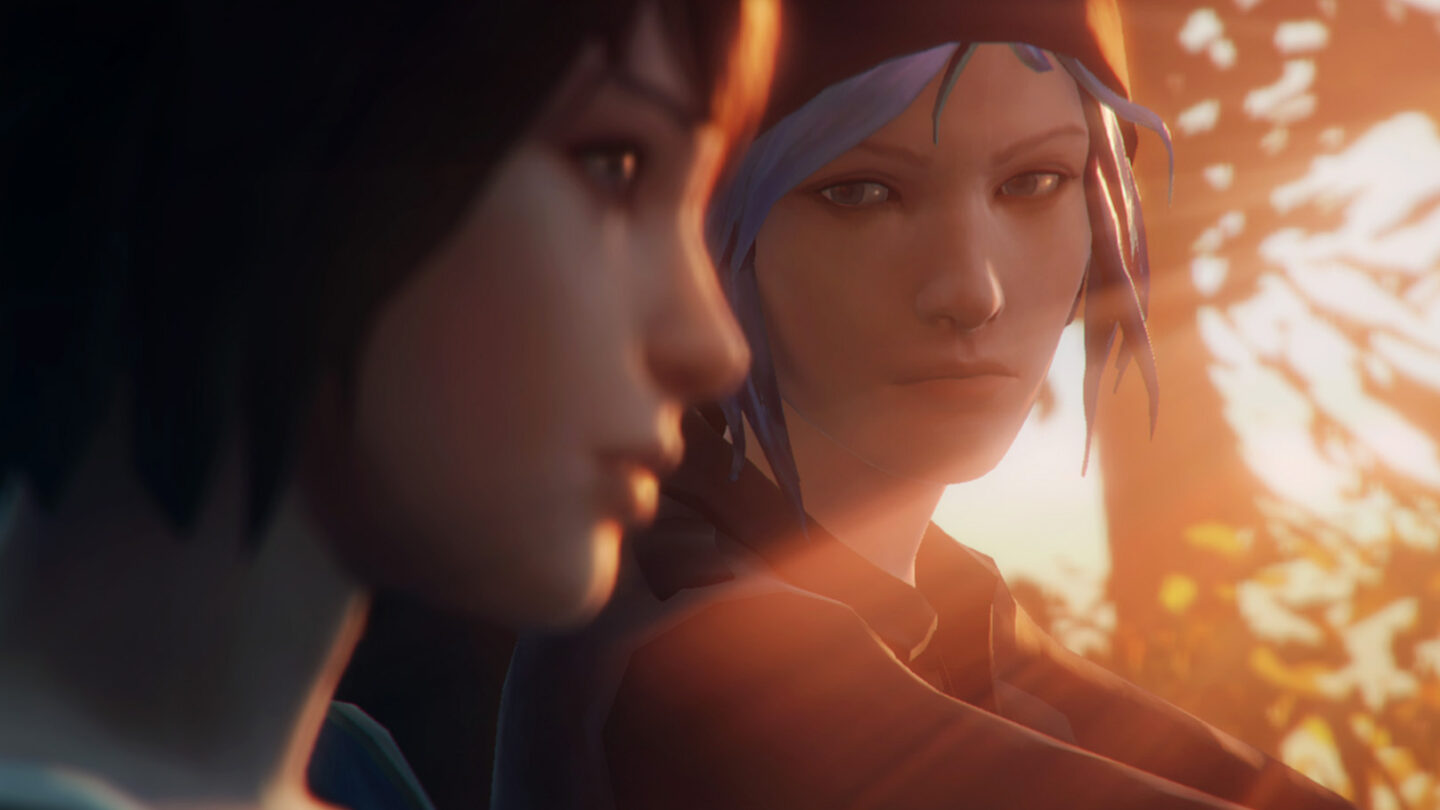Close to 1 in 5 American gamers identify as LGBTQ+, according to new research from GLAAD. But LGBTQ+ gamers often face harassment in gaming communities and games with voice chats that anybody can join — common in multiplayer, team-based games.
The research indicates that 52% of LGBTQ+ gamers faced harassment while playing online, and 42% have avoided a game due to anticipated harassment.
“It’s difficult when you’re trans to hop on voice chat with random people because you open yourself up to criticism or potential harassment,” said Veronica Ripley, also known as Nikatine, a full-time Twitch streamer and founder of the Discord community Transmission Gaming for trans gamers.
Ripley says that when she goes live, she opens herself up to criticism or harassment for being trans. Her moderators now swiftly remove hate comments and ban offenders almost daily. She says things have improved over time, but one incident from when she first started streaming in 2016 stands out.
“One day somebody showed up with like a thousand people, like a hate raid, all saying the worst possible things they could think of,” Ripley told NPR’s “Morning Edition”.
So she started to make fun of them a little bit, and some of those people stuck around and became viewers.
“The point of streaming at all is to show the world that there’s more to trans people than just our identity. We’re people… and I think a lot of people can lose sight of that,” she said.
Despite these challenges, video games are important to her partly because they were critical to her understanding of gender. As a kid, she gravitated towards games where she didn’t have to play as “the same gritty dude protagonist” typical of video games.
“The Sims was a big one when I was a kid. It’s still a big game for queer people to this day. You can make an avatar and explore what it’s like to try on a different gender for a little while. Games that allow people to do that are some of the best games for queer folks,” Ripley said.
“A lot of folks in our community use video gaming to see that representation and want to see themselves in characters,” said Ray Lancione, president of Qweerty Gamers, streamer, and former video game community manager. “Our community [uses] it to find each other … finding people that are like-minded or similar sexualities, genders.”
American gamers are actually diverse
There has been an idea for decades in the video game industry that gamers are made up of a core group of teenage, white, heterosexual boys. But that hasn’t been true for a long time.
In 2022, research from The Entertainment Software Association indicated that 48% of American gamers were female and 52% were male. The same report noted that 71% of American gamers were white, while 29% were people of color.
Until recently, there was little data tracking how many gamers identify as LGBTQ+. In 2020, Nielsen released a report indicating that 10% of gamers identified as such. Adrienne Shaw, a seasoned video game researcher and associate professor in media studies and production at Temple University, said there weren’t good data points beyond that. And that there’s not much data to break down what the LGBTQ+ audience looks like and what kind of games they’re playing.
Shaw collaborated on a study with GLAAD, assisted by Nielsen, surveying over 1500 American gamers. The findings revealed that 17% of individuals who game an hour or more per week and 19% of those who game 10+ hours per week identify as LGBTQ+.
“We do have some data that we’ve shared for a number of years, but really nothing to this extent,” said Stacie de Armas, senior vice president of diverse insights and innovation at Nielsen.
Younger generations are more open about identity
De Armas says that this jump from 10 to 17 percent represents the evolution of society. Recent studies have shown that nearly 30% of Gen Z adults in the U.S. identify as LGBTQ+.
“We have a younger generation of gamers now… the data and research shows [they] are more inclusive about their personal identities. They are perhaps in an environment where they can be more open,” said de Armas.
Tristan Marra, GLAAD’s head of research, says the 17% number shows how much the LGBTQ+ gaming community has grown in just three years.
“That 70% growth in three years is something that gaming developers and the gaming industry at large should take very seriously,” she said.
Real representation is still hard to find in games
GLAAD’s research reveals that despite LGBTQ+ gamers comprising a significant portion of America’s gaming audience, less than 2% of all games include LGBTQ+ characters or storylines. They arrived at this figure by examining games tagged with LGBTQ+ content on PC and console stores such as Steam, the PlayStation Store and the Xbox Store — stores where the average person typically finds their games.
Only a small fraction of that 2% feature LGBTQ+ main or playable characters, although some games lack romance or human characters altogether. There are a few examples from major studios in recent years. For example, Ellie from “The Last of Us” serves as a lesbian protagonist, and the game turned into a major, award-winning HBO show.
The Life is Strange series features several LGBTQ+ protagonists, like Max, who can end up with her best friend Chloe if players choose. “Baldur’s Gate 3”, which won Game of the Year at The Game Awards, includes LGBTQ+ characters and offers a lot of flexibility in character creation for someone to be whoever they want.
But Shaw says the vast majority of LGBTQ+ representation is in the form of optional romances. This means the main player character can have relationships with non-player characters that are a variety of genders, like teammates, villagers or merchants.
GLAAD researchers also collected data on people’s attitudes towards LGBTQ+ content in games, something they said there was no data on before. They found that at least 70% of non-LGBTQ+ gamers are either indifferent or more inclined to play or purchase games with LGBTQ+ representation.
Why game studios hesitate to include LGBTQ+ characters
Shaw says there’s a lot of LGBTQ+ representation in video games from independent companies. “But getting big companies to take a chance on a title that’s going to reach billions of people is very different,” she said.
Concerns about backlash, including negative reviews and social media uproar, complicate things more. Studios may struggle to justify improving representation or not know how.
“Life is Strange,” developed by Dontnod Entertainment and published by Square Enix, benefited from Dontnod’s origins as an independent game studio. This allowed them creative freedom to craft the desired story and characters, as explained by Michel Koch, the co-creator and art director, in an NPR interview.
“I feel like each time we start a new story or a new game, we are really trying to find and write the best characters for this story. To make sure that who they are is aligned with the themes of the story,” said Koch.
As they were advancing in development, they started to need funding. So they started to meet with publishers.
“We got some feedback from some publisher that ‘oh no, this won’t sell. We cannot publish this game, even if it looks cool,'” Koch said. “And we found Square Enix who loved the project as it was. They didn’t ask us to change anything… I would say that it was a lot of luck.”
Koch says he hasn’t seen any data like what GLAAD has released, and only knows the reactions Dontnod got after Life is Strange was released. There were players who loved it, and they also saw some who disliked it.
“We know that our core audience are very positive about the games we are making. But there is always this vocal minority that pushes very strongly to say this game is too woke,” he said. “We should make sure that we are not listening too much to the vocal minorities.”
Koch says he also knows that video games are a business — particularly the risk of game bans in certain international markets if certain scenes are included.
“If we were to release the game in Russia, for example, we wouldn’t have been able to include this romance, this arc. And Square Enix … they accepted that we didn’t release the game in Russia at all, which meant that we could keep the game the way we wanted [it] to be,” Koch said.
But Koch says he could see some bigger games or other companies that don’t want to miss out on a market like Russia. And they may end up removing those storylines or characters because it wouldn’t be allowed to be published in that country.
How can game studios improve representation?
Marra says it’s important to be able to put a stake in the ground and measure how much representation is currently available in all forms of media, so the number can start to be moved up to where it should be.
Shaw thinks the report shows “a really strong case you can take to your executives or take to your team and say ‘hey, we have good numbers and a good reason to increase this representation.'”
The GLAAD report, making it clear that LGBTQ+ gamers prefer games with LGBTQ+ content, provided recommendations for the industry and developers. They suggest having a proportionate representation of LGBTQ+ characters in games, making gaming communities more inclusive, consulting LGBTQ+ media experts like GLAAD and hiring LGBTQ+ individuals for leadership roles in the gaming industry.
Copyright 2024 NPR. To see more, visit https://www.npr.org.
9(MDAxODM0MDY4MDEyMTY4NDA3MzI3YjkzMw004))

9(MDAxODM0MDY4MDEyMTY4NDA3MzI3YjkzMw004))








